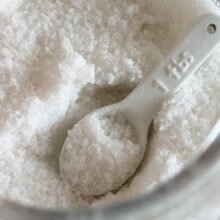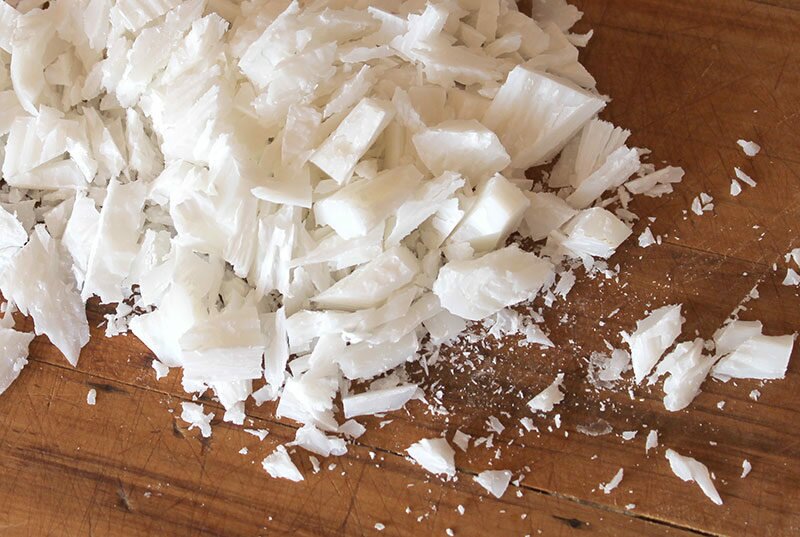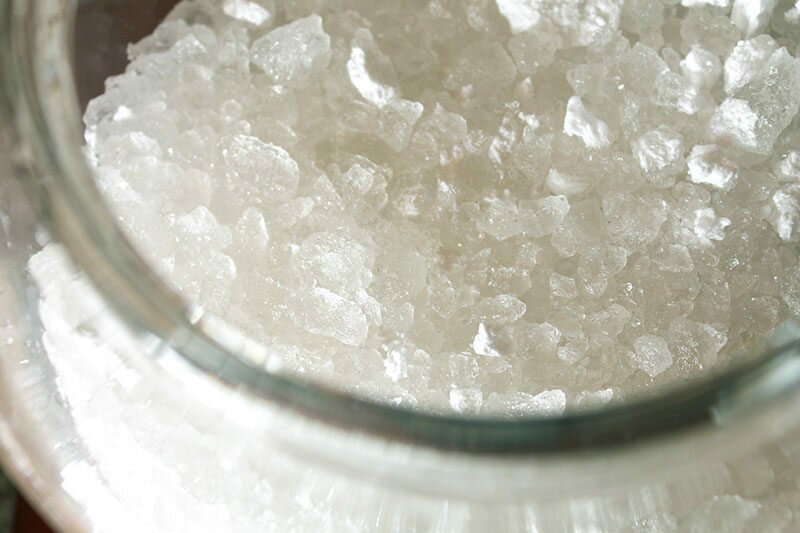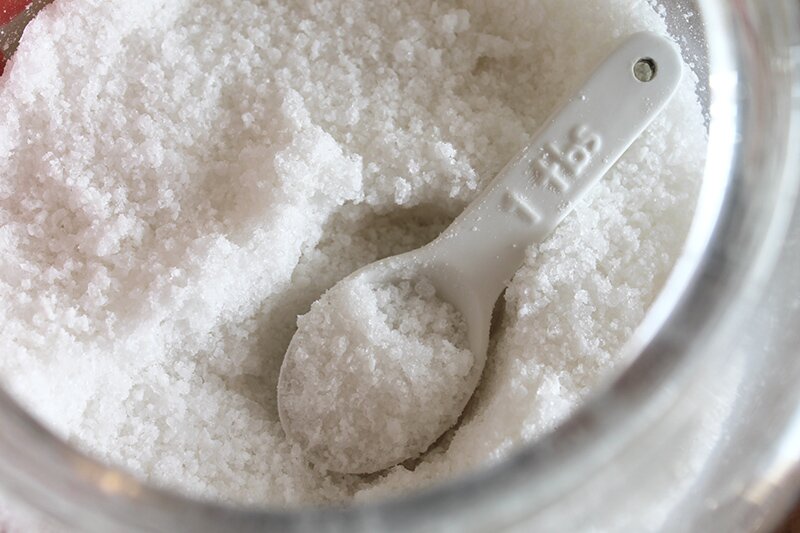Laundry is one of those domestic chores I take little pleasure in (although it’s not the worst), so I never thought I would ever celebrate it with a dedicated blog post! But while I have yet to meet a homemaker who enjoys folding washing, there’s no denying that our clothes and the washing, drying, and wearing of them, have quite a big say in how sustainable our lifestyles are. My laundry was one of the first areas in my house to get an eco-makeover when I learned I was going to be a first-time mama back in 2012. Laundry detergents are now well known for their part in skin irritations such as eczema and psoriasis, and newborn babies are especially sensitive to them. I was lucky to be given bags and bags of beautiful hand-me-down baby clothes by my sister, and it was mostly merino, organic cotton, with the odd bit of bamboo. Those luxury fabrics deserved nothing less than the gentlest wash, so I bought a box of Lux soap flakes and washed everything by hand, then dried them on the line. Anyone reading this who has children of their own will know that this has never happened since, haha 😂 – what crazy things we expectant first-time mothers did! But even though I did it only once, the seed of awareness was sown. I have made small but cumulative changes to my laundry over the past few years as my interest in ethical, sustainable, healthy living has developed. Back in 2016, I wrote a blog post titled “How to organise an eco-friendly laundry” where I shared some of these changes but I’ve refined a lot of things since, mostly to save time and effort, so I thought it was time for an update.
Firstly, I still make my own laundry powder. I haven’t bought laundry detergent for years, not even ‘eco-friendly’ ones. My sister was on to eco-friendly laundry powders way before me and she found them really harsh on fabrics, complaining that her family’s clothes had become threadbare way too quickly since using them. That was what initially motivated me to make my own, but then later I also committed to living plastic-free and more recently, low-waste (I’m working towards zero-waste but I won’t pretend I’m there yet). So as far as I’m concerned, ready-made laundry powders/liquids aren’t good enough for me. For a long time I made an easy, affordable laundry powder that contained grated soap, washing soda, and borax, but I’ve now ditched the borax. Why? There’s a lot of confusing/vague discussion on the internet about the safety of borax (not boric acid) and I have no opinion on the matter myself – when I learned that borax doesn’t readily dissolve in cold water and washing soda does a better job of softening water anyway, I just decided to omit the borax altogether, thus simplifying my laundry even more and eliminating any unknown health risk. The laundry powder I make now is SUPER quick and easy to make, it cleans clothes well enough for my liking (even my kids’ grubby clothes), it is surely the gentlest fabric cleaner you could possibly use (!), and it is zero-waste if you buy your washing soda in bulk from somewhere like Bin Inn and compost the cardboard soap box. It contains only TWO ingredients (well three, if you include rain water). One thing I must admit, however, is that it isn’t as cheap as my borax-containing-recipe was, nor is it as cheap as some of the eco-friendly laundry detergents in the supermarket – just so you know. I worked it out to be around $7.30 for 19 loads of washing.
So here’s my recipe if you’re interested, and I’ll talk you through it with some pics below:

Mrs Goodness' Homemade Laundry Powder
Ingredients
- 1 bar pure coconut oil soap $5.50
- 2 cups washing soda crystals $1.80
Instructions
-
Chop the bar of soap into small chunks with a sharp knife and then whizz in a small food processor for a few seconds until it's a fine, crumbly powder. (I use the little food processor that attaches to my whizz stick). It's pure soap, so it's fine to do this in kitchenware!
-
Put the soap crumbs into an airtight container.
-
Next, put 2 cups of washing soda crystals into your food processor and blitz until they are fine crumbles too. Add them to the soap crumbs and stir together well so it's all combined. Rinse food processor and utensils well to remove any trace of soap or washing soda.
-
I use 2Tbsp for a full load in my top loader. Add ¼ cup white vinegar to the fabric softener compartment of your washing machine, and you can also add a few drops of lemon essential oil for fragrance (and grease-busting power - apparently) to the vinegar.
Recipe Notes
- I only use Niugini Organics coconut soap - read the rest of the blog post to learn why.
- My local Bin Inn only sells washing soda crystals so I whizz them to make them like powder. It seems you can buy washing soda in a powder form too, which would save this step.
- The white vinegar is added to dissolve any soap residue that may remain at the end of the wash cycle. This is good not just for your clothes (and skin) but also for your washing machine. Any faint whiff of vinegar on your clothes will disappear completely when they dry.

My soap of choice for this homemade laundry powder recipe is Niugini Organics Virgin Coconut Oil soap, which I buy from my local Bin Inn, but you can also buy it online and I’ve seen it at other organic/wholefood shops too. Coconut oil soap gives a really foamy thick lather, which is why I like using it for laundry washing. This soap contains only virgin coconut oil, rain water, and lye – be aware that the reaction between lye and oil makes soap so there is no lye present in the finished bar (just in case you are worried about it being a dangerous ingredient). I’m a big fan of the Niugini soap because it’s made in Papua New Guinea by community growers of wild harvested coconuts. No fertilisers, no pesticides, and I’m supporting a local indigenous community 😊. I buy the lemongrass-scented soap when I can find it, or just the plain unscented bar.
So it seems you can buy washing soda in a powder, but I have only ever found these washing soda crystals in the bulk bins. The crystals are quite big, so that’s why I blitz them into fine granules with my little food processor. I suppose if you can find the powder it could save you that step in the recipe.

To keep my laundry powder from clumping, I’ve also made a little ‘dessicant’ pouch by putting a couple of teaspoons of rice into a small piece of muslin and tying it up with string. That just sits at the bottom of my jar and the rice grains apparently act like a dessicant by absorbing moisture.
If I have particularly grubby clothes, I will presoak them with 4Tbsp sodium percarbonate (aka. oxygen bleach – non-toxic, environmentally safe, and biodegradable) dissolved in a bucket of hot water. Finished with a line dry in the sun, this gets all our whites whiter 😁. I should also add that a clean washing machine is absolutely essential if you expect clean, fresh-smelling clothes at the end of a wash cycle! Being pretty much permanently damp, washing machines create the perfect environment for mould (also a skin and respiratory irritant).
So that’s my homemade laundry powder and fabric softener for you, but they’re just the start. In my next blog post I’ll share with you a whole lot of other ways I’ve eco’d up our laundry and made things easier for me and for the environment. If you have a go at making and using this laundry powder I’d be curious to know what you think!
PS. If you’ve got this far and you don’t actually know what’s wrong with conventional laundry detergents, have a quick read of this article at www.annmariegianni.com – she breaks down all the dangerous components of common laundry detergents and explains why they’re so bad.
PPS. If you don’t know how to clean your washing machine, here’s a link to WellnessMama’s instructions on how to deep clean your machine (front or top loader) without scary chemicals: https://wellnessmama.com/clean-washing-machine/

I found this looking for soap flakes and continued to read. Thanks for the recipe. I was also using eco-friendly detergent due to my sensitivity to typical types. However, even after knowing what “regular” detergents did to my body, I somehow overlooked my constant back aches and really awful pain, mostly in my right leg. That’s when it finally hit me one night while trying to sleep that I usually sleep on my right side and the pain I was experiencing was very out of the ordinary. I figured it could still be the detergent so I switched to soap flakes. Lo and behold, my pain has reduced by at least 80%. After all of these years of using ‘eco friendly’ stuff, it could take a while for my lower back to heal but at least I’m on the right track.
I wonder how many people don’t realise that their detergent is causing many of their aches and pains? I often hear that people wake up with sore backs and yes it could be from the bed but they should eliminate their detergent as a culprit as well!
Wow! That is absolutely mind-blowing – I can’t believe you even figured it out . I have heard that “eco-friendly” detergents can be harder on your washing machine and your clothes; they certainly are not all created equal. However, one needs to be a bit of a chemist to be able to differentiate between a lot of them, which is why it can just be easier to make your own. I’ve recently switched to Ecostore sensitive laundry liquid (I bought a bulk 5L container) because I felt overwhelmed by how much stuff I’ve got going on at the moment. I feel I can honestly say that my homemade recipe cleans just as well as Ecostore’s. I hope it works for you 🙂